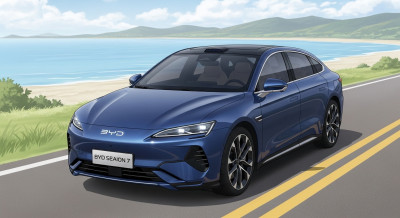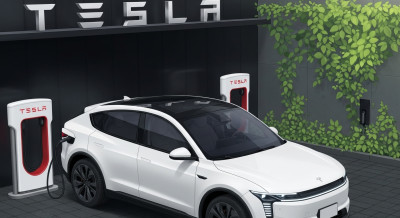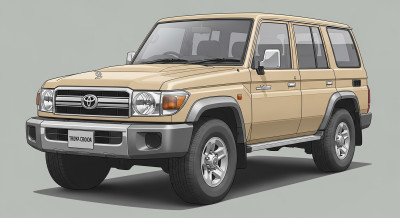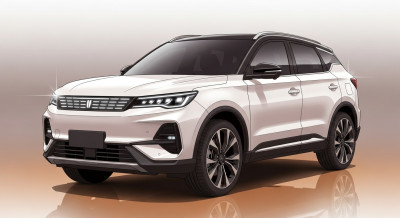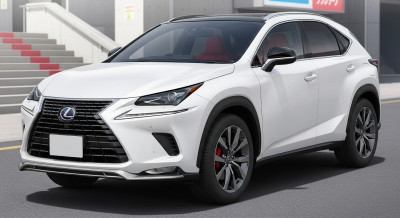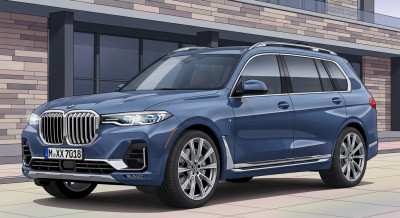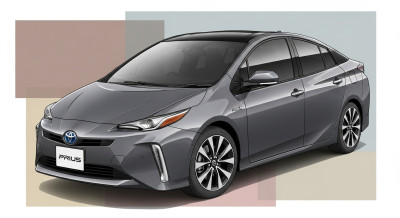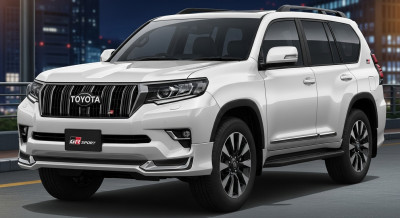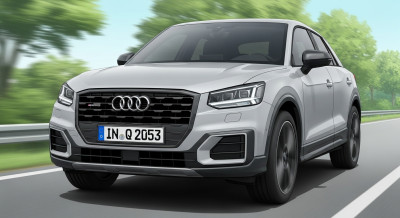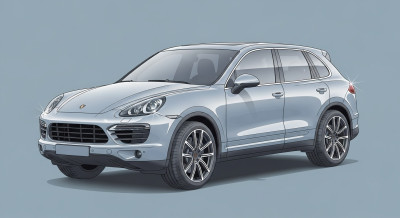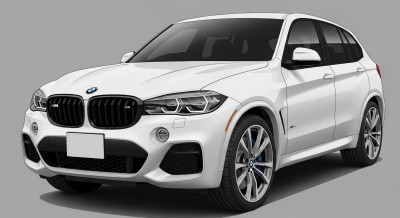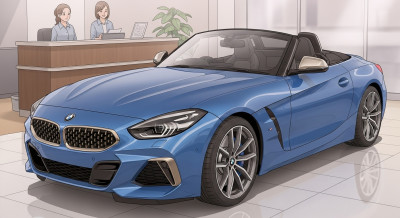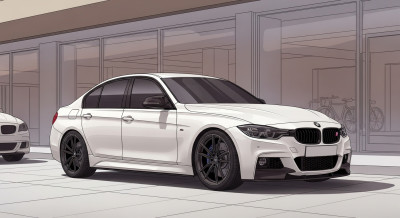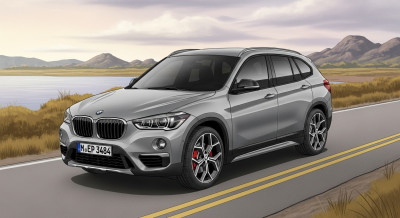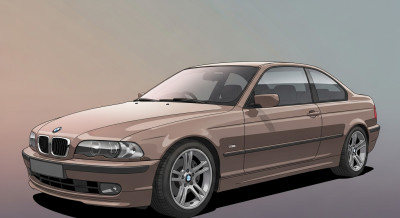Range Rover Sport (2023) - The Most Dramatic Range Rover SUV Yet!
Thanks: BigTimeAuto
https://www.instagram.com/bigtimeauto_club/
http://t.me/bigtimeauto_club
Land Rover Range Rover Sport review
“One of the pioneering performance SUVs uses plug-in power to stay relevant in its third generation”
Good stuff
Some smart and swish PHEV options, plusher driving experience than gnarlier rivals
Bad stuff
The price has jumped about £15k, number plates arguably in the wrong places, very heavy
What is it?
It’s the third generation of one of the performance SUV pioneers. The Range Rover Sport first launched in 2005, back when quick 4x4s were still in their infancy. Now everyone’s at it, giving the lads and lasses in Gaydon a tougher task than ever keeping theirs relevant.
The Sport follows a few months after the full-fat Range Rover’s reinvention. It’s 35 per cent stiffer and sits 20mm lower – to help justify its suffix – and comes with four-wheel drive as standard, hooked up to an array of petrol, diesel and hybrid powertrains.
Yep, diesel soldiers firmly on here, and kicks the range off at a smidge over £80,000. That gets you a D300 – three litres, six cylinders and a mite under 300bhp – in base SE trim. ‘Base’ being purely a relative term in the Range Rover universe, of course. We wish you the best of luck spending just that, though; options pile on easily and the flagship P530 – with a 523bhp, twin-turbo V8 engine under its clamshell bonnet – kicks off at a stocky £116,190.
Diesels and V8s? Is it really relevant?
Worry not! There is a plug-in hybrid at launch, too, while a fully electric version lands in 2024. The former comes in two specs, offering either 434 (P440e) or 503bhp (P510e) peaks. Both claim to offer 70 miles of electric-only range – let’s call it 50 in the real world – and Land Rover reckons 75 per cent of its customers’ journeys can potentially be covered with zero local emissions. And, of course, zero engine noise.
If your journeys are usually so short, then there’s naturally an argument you don’t really need a plush, £100k SUV. But there’s rarely been a great deal of rationality applied by anyone purchasing a car in this increasingly crowded corner of the world. If three-ton lumps must crawl around urban environments, then we’re at least all significantly better off if they’re doing so more eloquently.
How heavy?
It’s a big old beast with a bunch of batteries aboard, there’s no denying that. Land Rover claims an unladen weight of ‘from 2,810kg’ for the PHEV, and we measured a P440e test car at 2,860kg with half a tank of fuel. Land Rover likes to talk a lot about its reductive design, it doesn’t like to be reminded at all of its additive engineering strategy. ‘Just keep piling the weight on, no-one minds’ seems to be the plan. which means you’ll soar past three tonnes by filling yours with fuel, family members and their belongings. But most mainstream manufacturers appear to have long since given up on fighting size and weight, concentrating instead on mitigating their effects with technology.
The latest Sport certainly packs an arsenal of that. An optional handling pack brings all-wheel steering, an electronic differential, brake-based torque vectoring and something called Dynamic Response Pro – a 48V anti-roll programme to help the car corner somewhat flatter than physics might otherwise wish. Low-gearing as well as hill descent and terrain response systems gives it Land Rover’s usual 4x4 cred, too. It doesn’t break the rules of physics though. That same P440e took 108 metres to stop from 100mph, and over 40 metres from 60mph, some of the worst braking figures we’ve ever recorded.
What's the verdict?
“One of the pioneering performance SUVs uses plug-in power to stay relevant in its third generation”
There’s evolution and revolution all at once here. Smart plug-in hybrids launch the third-gen Range Rover Sport and a fully electric version follows soon after, but those loyal to the brand (and buying their umpteenth example) ought not to feel too frazzled by the new aesthetic inside and out.
It’s very cleanly designed, well executed and desirable, if not as convincingly and confidently executed as the full house Range Rover. The design here is more anonymous. And forget any pretence of sportiness. The weight sees to that. But handling prowess was never the Sport’s bag – it’s about attitude, and this still has it. Plus comfort, image and luxury.
Land Rover knows how to nod back to its tradition better than most. And in a world of increasingly gnarly performance SUVs, the comparatively plusher edge of the latest Sport does exactly that. Just watch the price as the options pile on...
Read More https://www.topgear.com/car-reviews/land-rover/range-rover-sport
📌 Instagram ▶ https://www.instagram.com/cartvpress
📌 Facebook ▶ https://www.facebook.com/CARTVPres
Thanks: BigTimeAuto
https://www.instagram.com/bigtimeauto_club/
http://t.me/bigtimeauto_club
Land Rover Range Rover Sport review
“One of the pioneering performance SUVs uses plug-in power to stay relevant in its third generation”
Good stuff
Some smart and swish PHEV options, plusher driving experience than gnarlier rivals
Bad stuff
The price has jumped about £15k, number plates arguably in the wrong places, very heavy
What is it?
It’s the third generation of one of the performance SUV pioneers. The Range Rover Sport first launched in 2005, back when quick 4x4s were still in their infancy. Now everyone’s at it, giving the lads and lasses in Gaydon a tougher task than ever keeping theirs relevant.
The Sport follows a few months after the full-fat Range Rover’s reinvention. It’s 35 per cent stiffer and sits 20mm lower – to help justify its suffix – and comes with four-wheel drive as standard, hooked up to an array of petrol, diesel and hybrid powertrains.
Yep, diesel soldiers firmly on here, and kicks the range off at a smidge over £80,000. That gets you a D300 – three litres, six cylinders and a mite under 300bhp – in base SE trim. ‘Base’ being purely a relative term in the Range Rover universe, of course. We wish you the best of luck spending just that, though; options pile on easily and the flagship P530 – with a 523bhp, twin-turbo V8 engine under its clamshell bonnet – kicks off at a stocky £116,190.
Diesels and V8s? Is it really relevant?
Worry not! There is a plug-in hybrid at launch, too, while a fully electric version lands in 2024. The former comes in two specs, offering either 434 (P440e) or 503bhp (P510e) peaks. Both claim to offer 70 miles of electric-only range – let’s call it 50 in the real world – and Land Rover reckons 75 per cent of its customers’ journeys can potentially be covered with zero local emissions. And, of course, zero engine noise.
If your journeys are usually so short, then there’s naturally an argument you don’t really need a plush, £100k SUV. But there’s rarely been a great deal of rationality applied by anyone purchasing a car in this increasingly crowded corner of the world. If three-ton lumps must crawl around urban environments, then we’re at least all significantly better off if they’re doing so more eloquently.
How heavy?
It’s a big old beast with a bunch of batteries aboard, there’s no denying that. Land Rover claims an unladen weight of ‘from 2,810kg’ for the PHEV, and we measured a P440e test car at 2,860kg with half a tank of fuel. Land Rover likes to talk a lot about its reductive design, it doesn’t like to be reminded at all of its additive engineering strategy. ‘Just keep piling the weight on, no-one minds’ seems to be the plan. which means you’ll soar past three tonnes by filling yours with fuel, family members and their belongings. But most mainstream manufacturers appear to have long since given up on fighting size and weight, concentrating instead on mitigating their effects with technology.
The latest Sport certainly packs an arsenal of that. An optional handling pack brings all-wheel steering, an electronic differential, brake-based torque vectoring and something called Dynamic Response Pro – a 48V anti-roll programme to help the car corner somewhat flatter than physics might otherwise wish. Low-gearing as well as hill descent and terrain response systems gives it Land Rover’s usual 4x4 cred, too. It doesn’t break the rules of physics though. That same P440e took 108 metres to stop from 100mph, and over 40 metres from 60mph, some of the worst braking figures we’ve ever recorded.
What's the verdict?
“One of the pioneering performance SUVs uses plug-in power to stay relevant in its third generation”
There’s evolution and revolution all at once here. Smart plug-in hybrids launch the third-gen Range Rover Sport and a fully electric version follows soon after, but those loyal to the brand (and buying their umpteenth example) ought not to feel too frazzled by the new aesthetic inside and out.
It’s very cleanly designed, well executed and desirable, if not as convincingly and confidently executed as the full house Range Rover. The design here is more anonymous. And forget any pretence of sportiness. The weight sees to that. But handling prowess was never the Sport’s bag – it’s about attitude, and this still has it. Plus comfort, image and luxury.
Land Rover knows how to nod back to its tradition better than most. And in a world of increasingly gnarly performance SUVs, the comparatively plusher edge of the latest Sport does exactly that. Just watch the price as the options pile on...
Read More https://www.topgear.com/car-reviews/land-rover/range-rover-sport
📌 Instagram ▶ https://www.instagram.com/cartvpress
📌 Facebook ▶ https://www.facebook.com/CARTVPress
 LEXUS
LEXUS  AUDI
AUDI  PORSCHE
PORSCHE  ROLLS-ROYCE
ROLLS-ROYCE  LAND ROVER
LAND ROVER  FERRARI
FERRARI  MASERATI
MASERATI  CADILLAC
CADILLAC  CHRYSLER JEEP
CHRYSLER JEEP 















